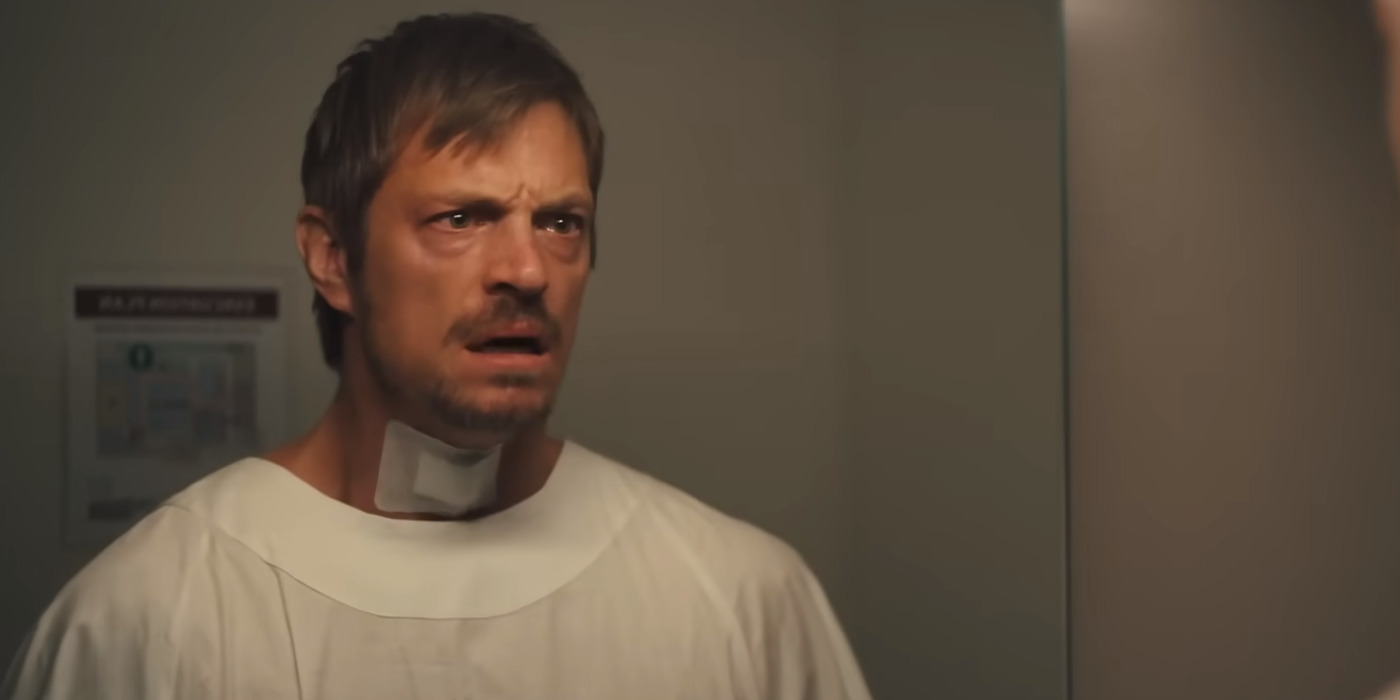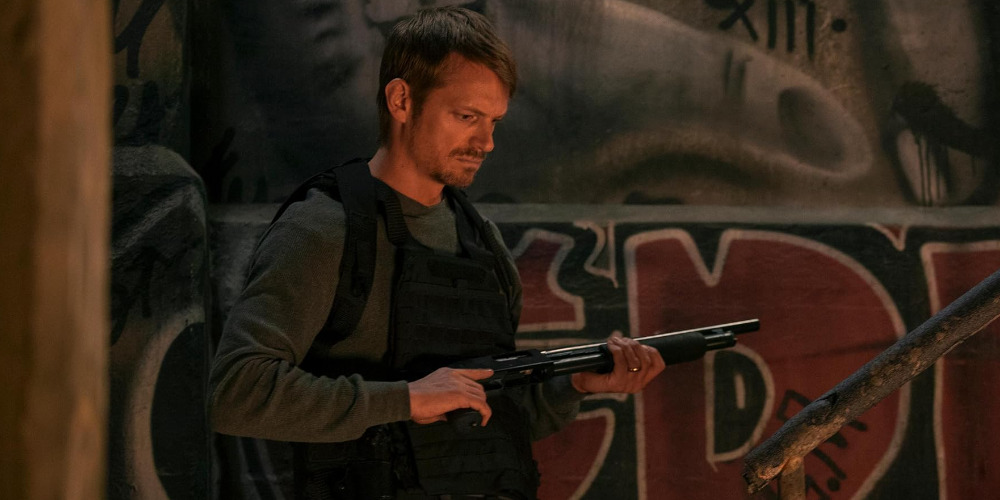John Woo’s unconventionally holiday-themed action film, ‘Silent Night,’ a film entirely bereft of vocal dialogues, brings a whole new meaning to the saying, “Action speaks louder than words.” After the untimely death of his young kid, Godlock, a man robbed of his family (and voice), devotes himself to tracking his son’s killers down. Leaving all inhibitions behind and hardwiring his body for brutality, Godlock chooses Christmas Eve as the perfect time to enact his revenge, resulting in a big and bold bloodbath.
A film about revenge at its center, ‘Silent Night’ presents a familiar tale about a father’s love and the violent grief that follows. However, through impressive themes, captivating visuals, and a commendable performance by lead actor Joel Kinnaman, Woo infuses his tale with something entirely unique to his filmmaking. As such, given the stylistic aspect of the film and its relatively rudimentary premise, viewers might be wondering where the film finds its origins and why the film has no spoken dialogue.
The Motive Behind No Spoken Dialogue

When Woo first saw the script written by Robert Archer Lynn, he was instantly impressed and moved by it. Aside from the fact that the director found Lynn’s work to be “smart,” in his own words, the story’s emotional drive revolving around a vengeful father touched Woo, who is a father of three children himself. Such a tale about a parent’s dedication to protecting their kids— or avenging their unfortunate deaths— has been a genre of its own within Hollywood for a long time.
From classics of the past, like Steven Soderbergh’s ‘The Limey’ to the timeless ‘Taken’ starring Liam Neeson, audiences have long gravitated toward films with vengeful fathers at their center. Perhaps for the same reason, basing his wordless action film within the familiar confines of a revenge plot proves to be the best bet for Woo. When discussing the film with EW, the director stated, “The biggest challenge [about making a movie without dialogue] is how do you make the audience accept a story without dialogue, and get them moved by the story, let them understand they’re not missing something.”
As it would turn out, the same can be best achieved through presenting an audience with a familiar story, inherently charged with emotionality, that easily invites attention and empathy. Within the narrative, Godlock’s grief, though unspoken, remains painfully present throughout his storyline, allowing the audience to understand his character, motives, and desires perfectly. Furthermore, the protagonist’s lingering silence plays into his desperation and helplessness as a parent. Thus, the no dialogues component evolves into something more significant than a simple gimmick.
Furthermore, Woo equipped every tool in his arsenal to his advantage, ensuring he brought the perfect story to the screen. “It [the lack of dialogues] allowed me to use visuals to tell the story, to tell how the character feels,” said the director. “We are using music instead of language. And the movie is all about sight and sound.”
Likewise, despite his humorously abandoned attempt at method acting, Kinnaman overcame the challenge of acting without words and brought a unique authenticity to his character by performing most of his own stunts. Woo spoke about the same and said, “He [Kinnaman] tried [to give] a real performance, but only with his eyes. His eyes have so many stories and so many emotions. I was so happy to work with him.” Ultimately, a fictional story, ‘Silent Night,’ charts an entertaining tale about a familiar narrative.
Read More: Best Movies With Almost No Dialogue


You must be logged in to post a comment.